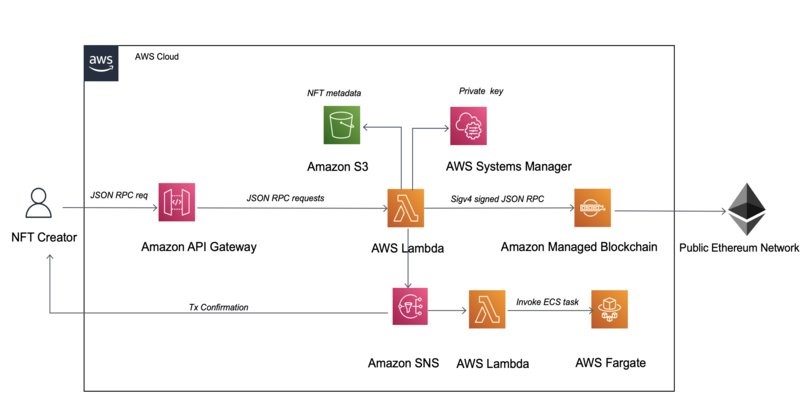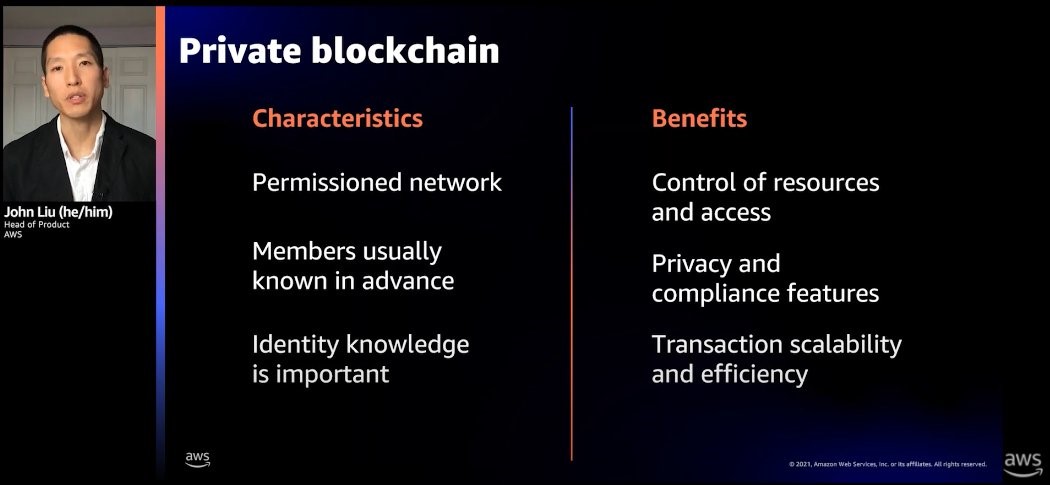Post Syndicated from Edouard Kachelmann original https://aws.amazon.com/blogs/architecture/audit-your-supply-chain-with-amazon-managed-blockchain/
For manufacturing companies, visibility into complex supply chain processes is critical to establishing resilient supply chain management. Being able to trace events within a supply chain is key to verifying the origins of parts for regulatory requirements, tracing parts back to suppliers if issues arise, and for contacting buyers if there is a product/part recall.
Traditionally, companies will create their own ledger that can be reviewed and shared with third parties for future audits. However, this process takes time and requires verifying the data’s authenticity. In this blog, we offer a solution to audit your supply chain. Our solution allows supply chain participants to safeguard product authenticity and prevent fraud, increase profitability by driving operational efficiencies, and enhance visibility to minimize disputes across parties.
Benefits of blockchain
Blockchain technology offers a new approach for tracking supply chain events. Blockchains are immutable ledgers that allow you to cryptographically prove that, since being written, each transaction remains unchanged. For a supply chain, this immutability is beneficial from a process standpoint. Auditing a supply chain becomes much simpler when you are certain that no one has altered the manufacturing, transportation, storage, or usage history of a given part or product in the time since a failure occurred.
In addition to providing an immutable system of record, many blockchain protocols can run programmable logic written as code in a decentralized manner. This code is often referred to as a “smart contract,” which enables multi-party business logic to run on the blockchain. This means that implementing your supply chain on a blockchain allows members of the network (like retailers, suppliers, etc.) to process transactions that only they are authorized to process.
Benefits of Amazon Managed Blockchain
Amazon Managed Blockchain allows customers to join either private Hyperledger Fabric networks or the Public Ethereum network. On Managed Blockchain, you are relieved of the undifferentiated heavy lifting associated with creating, configuring, and managing the underlying infrastructure for a Hyperledger Fabric network. Instead, you can focus your efforts on mission-critical value drivers like building consortia or developing use case specific components. This allows you to create and manage a scalable Hyperledger Fabric network that multiple organizations can join from their AWS account.
IoT-enabled supply chain architecture
Organizations within the Industrial Internet of Things (IIoT) space want solutions that allow them to monitor and audit their supply chain for strict quality control and accurate product tracking. Using AWS IoT will allow you to realize operational efficiency at scale. The IoT-enabled equipment on their production plant floor records data such as load, pressure, temperature, humidity, and assembly metrics through multiple sensors. Data can be transmitted in real time directly to the cloud or through an on-premises AWS Internet of Things (IoT) gateway (such as any AWS IoT Greengrass compatible hardware) into AWS IoT for storage and analytics. These devices or IoT gateway will then send MQTT messages to the AWS IoT Core endpoint.
This solution provides a pipeline to ingest data provided by IoT. It stores this data in a private blockchain network that is only accessible within member organizations. This is your immutable single source of truth for future audits. In this solution, the Hyperledger Fabric network on Managed Blockchain includes two members, but it can be extended to additional organizations that are part of the supply chain as needed.

Figure 1. Reference architecture for an IoT-enabled supply chain consisting of a retailer and a manufacturer
The components of this solution are:
- IoT enabled sensors – These sensors are directly mounted on each piece of factory equipment throughout the supply chain. They publish data to the IoT gateway. For testing purposes, you can start with the IoT Device Simulator solution to create and simulate hundreds of connected devices.
- AWS IoT Greengrass (optional) – This gateway provides a secure way to seamlessly connect your edge devices to any AWS service. It also enables local processing, messaging, data management, machine learning (ML) inference, and offers pre-built components such as protocol conversion to MQTT if your sensors only have an OPCUA or Modbus interface.
- AWS IoT Core – AWS IoT Core subscribes to IoT topics published by the IoT devices or gateway and ingests data into the AWS Cloud for analysis and storage.
- AWS IoT rule – Rules give your devices the ability to interact with AWS services. Rules are analyzed and actions are performed based on the MQTT topic stream. Here, we initiate a serverless Lambda function to extract, transform, and publish data to the Fabric Client. We could use another rule for HTTPS endpoint to directly address requests to a private API Gateway.
- Amazon API Gateway – The API Gateway provides a REST interface to invoke the AWS Lambda function for each of the API routes deployed. API Gateway allows you to handle request authorization and authentication, before passing the request on to Lambda.
- AWS Lambda for the Fabric Client – Using AWS Lambda with the Hyperledger Fabric SDK installed as a dependency, you can communicate with your Hyperledger Fabric Peer Node(s) to write and read data from the blockchain. The peer nodes run smart contracts (referred to as chaincode in Hyperledger Fabric), endorse transactions, and store a local copy of the ledger.
- Managed Blockchain – Managed Blockchain is a fully managed service for creating and managing blockchain networks and network resources using open-source frameworks. In our solution, an endpoint within the customer virtual private cloud (VPC) is used for the Fabric Client. It interacts with your Hyperledger Fabric network on Managed Blockchain components that run within a VPC for your Managed Blockchain network.
- Peer node – A peer node endorses blockchain transactions and stores the blockchain ledger. In production, we recommend creating a second peer node in another Availability Zone to serve as a fallback if the first peer becomes unavailable.
- Certificate Authority – Every user who interacts with the blockchain must first register and enroll with their certificate authority.
Choosing a Hyperledger Fabric edition
| Edition |
Network size |
Max. # of members |
Max. # of peer nodes per member |
Max # of channels per network |
Transaction throughput and availability |
| Starter |
Test or small production |
5 |
2 |
3 |
Lower |
| Standard |
Large production |
14 |
3 |
8 |
Higher |
Our solution allows multiple parties to write and query data on a private Hyperledger Fabric blockchain managed by Amazon Managed Blockchain. This enhances consumer experience by reducing the overall effort and complexity with getting insight into supply chain transactions.
Conclusion
In this post, we showed you how Managed Blockchain, as well as other AWS services such as AWS IoT, can provide value to your business. The IoT-enabled supply chain architecture gives you a blueprint to realize that value. The value not only stems from the benefits of having a trustworthy and transparent supply chain, but also from the reliable, secure and scalable services that AWS provides.
Further reading




